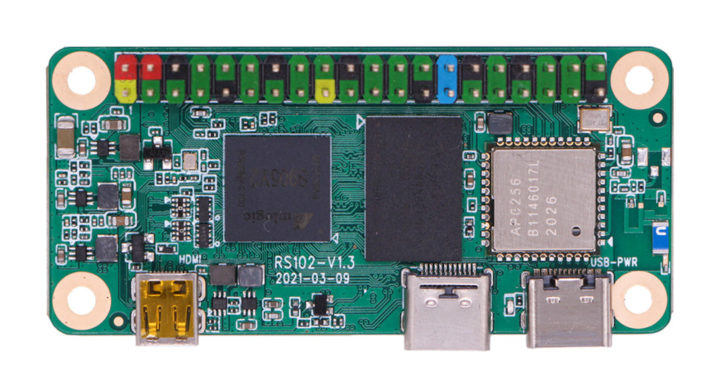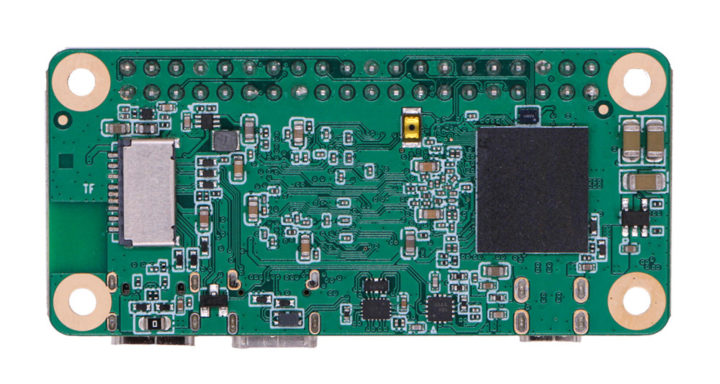Radxa Zero SBC follows Raspberry Pi Zero W form factor, but thanks to an Amlogic S905Y2 quad-core Cortex-A53 processor clocked at up to 2.0 GHz offers much higher performance, which Radxa says corresponds to about 70% of Raspberry Pi 4 CPU performance.
The tiny Arm Linux board comes with up to 4GB RAM, 16GB eMMC flash, and either AP6212 or AP6256 wireless module. plus all interfaces from Raspberry Pi Zero W, but with a twist as the mini HDMI port is replaced by a micro HDMI port, and USB-C ports are used instead of micro USB ports.

- SoC – Amlogic S905Y2 quad-core Cortex-A53 processor @ up to 2.0 GHz with Arm Mali-G31 MP2 GPU
- System Memory – 512MB RAM, 1GB, 2GB, or 4GB LPDDR4
- Storage – MicroSD slot, optional 8GB or 16GB eMMC flash
- Video Output – micro HDMI port up to 4Kp60
- Connectivity
- Ampak AP6212 module – 802.11b/g/n WiFI 4 up to 72 Mbps plus Bluetooth 4.0 or
- Ampak AP6256 module – 802.11n/g/n/ac WiFi 5 up to 433 Mbps and Bluetooth 5.0
- USB – 1x USB-C 2.0 OTG port, 1x USB-C 3.0 host port
Camera – 1x CSI camera connector- Expansion – Color-coded 40-pin Raspberry Pi compatible header
- Power Supply – 5V via USB-C port
- Dimensions – 65 x 30 x 5mm (same as Raspberry Pi Zero W)

The board should run Android and works is being done on Armbian/Twister OS, and other operating systems. From a software perspective, it’s a “G12A” platform, a reference you’ll find in the Linux kernel for example, and compatible with Amlogic S905X2.
Four variants of Radxa Zero board will be offered:
- 512MB LPDDR4 + AP6212 – $15
- 1GB LPDDR4 + AP6212 – $20
- 2GB LPDDR4 + 8GB eMMC + AP6256 – $30
- 4GB LPDDR4 + 16GB eMMC + AP6256 – 45$
Radxa has already manufactured 100 samples, some of which will be sent for free to developers to help with porting low-level software to the board. That also means the board is not quite ready for the “general public” just yet, and we may have to wait for a few more months.
As a side note, It’s not the first quad-core providing an alternative to Raspberry Pi Zero W, as Banana Pi M2 Zero was introduced in 2017 with an Allwinner H2+ quad-core Cortex-A7 processor up to 1.0 GHz, but again Radxa Zero will be much more powerful here.

Jean-Luc started CNX Software in 2010 as a part-time endeavor, before quitting his job as a software engineering manager, and starting to write daily news, and reviews full time later in 2011.
Support CNX Software! Donate via cryptocurrencies, become a Patron on Patreon, or purchase goods on Amazon or Aliexpress




